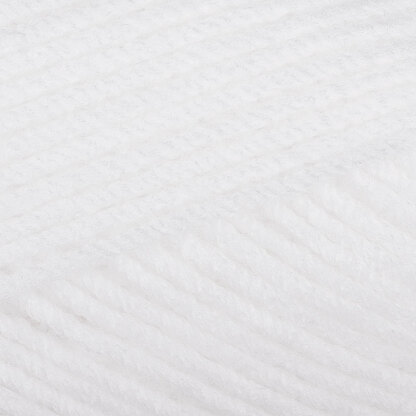How to wash hand knitted garments
Published on April 21, 2015 By Elizabeth Bagwell
Is there anything worse than seeing your treasured knitting and crochet creations destroyed in the wash? Learn how to safely clean your fave handmade garments, from choosing yarns that can be cleaned and dried easily, to top tips on washing wool and delicate fibers, Elizabeth Bagwell's guide is here to help!
Washing machine and tumble dry friendly yarns
Hand knitted items have a reputation for being hard to maintain. I personally think this is a cultural hangover from when young mums had washing machines but doting grandmas were still knitting in pure wool. Today, while there are some delicate yarns out there, there are also rough-and-tumble ones that will stand up to eight years (and counting) of regular wear in sneakers and wellies.
How to wash hand knitted garments
Check the label before you knit to make laundry easy: don’t use delicate wools for socks, babies or gifts unless you’ll be the one doing the washing. You can even find yarns that can be tumble dried now- ideal for new parents.
Superwash wools are treated to prevent felting and so are other yarns marked ‘machine washable’. I’ve been knitting my partner socks for over five years, washing them in the machine, and the oldest pair are still going strong. That’s even after laundrettes, industrial washes and a round-the-world trip!
Our favorite wool washes

What’s the worst that can happen?
Here lies the remains from when you machine wash a hand knitted mohair sweater. Editor Angie’s friend Michael accidentally washed his favourite sweater that his mother Sue made. As you can see, it is irreparably damaged due to the heat and friction caused by machine washing it.
Animal fibers
Wool, alpaca, angora and cashmere… even silk can felt if exposed to heat, friction and water simultaneously. A washing machine provides all these things. Felting is irreversible: the individual hairs matt together and cannot be undone.
Acrylics
Acrylics and other oil-based fibers (including polyester and polyamides) can be ‘killed’ by exposure to high temperatures (such as a boil wash or ironing). This relaxes the plastics in the yarn, making it go limp. This is also unfixable: when the yarn cools, it doesn’t ping back to its original shape. Think of leaving a plastic serving spoon or bowl in the oven.
Fine and thin yarns (such as laceweight) can break if roughly handled. The work will unravel outwards from the break.
Plant fibers
Plant fibers (including cotton and linen) are fairly robust but can stretch. This can be an issue in the machine, as they’re flopped around, or when drying. This is why some garments say ‘lay flat to dry’. This can sometimes be improved by carefully rewashing and drying the garment, but not always.
The check list: How to machine wash hand knits safely
Despite all the risks listed above, you can still put hand knits in the machine. Here’s how I do it, trying to balance convenience with practicality.
1. Check the label. Most yarns have care instructions – follow them.
2. Put your hand knits in a pillow case or mesh laundry bag.
3. Remember that color can leak out of or into yarn – keep colors similar in the wash.
4. Avoid putting heavy items like jeans in with your knits.
5. Use a gentle detergent or none.
6. Wash at 30 or 40 (80 – 100 degrees Fahrenheit) on a delicate cycle. Honestly, you really don’t need a more intense wash for hand knits, even for sweaty socks. Baby clothes with poop on them should be soaked clean first.
7. Do not tumble dry unless the label explicitly says it’s okay.
8. Dry sweaters and blankets flat if at all possible.
3 free machine-washable projects!
How to hand wash your knitting
The trick here is to avoid agitating your work, as this can lead to felting, stretching or yarn breaks. You’ll need a big bowl or a very clean sink.
1

Use warm, not boiling water (you’ll have to plunge your hands into it)
2

Add a gentle detergent
Dedicated wool washes are good as they can be left in so you don’t have to worry about thorough rinsing. They can also act like a conditioner does on your hair, leaving the garment looking its best. Using a dedicated wool wash is the only way to be 100% sure that your precious hand-knitted garments won't felt, shrink, or look dingy.
3

Leave the garment to soak for a little while – say 15 minutes
Gently push the garment under the water with your hands. Swish it around gently, and then pull it out.
4

Wrap the garment in a towel, and press more water out. Do not wring, twist or rub.
Roll the garment in the towel to squeeze out the water without causing the yarn to felt.
5
Pro Tip
To avoid accidentally throwing your hand knits in the wash, get a sectional laundry basket and reserve one of the sections for hand wash only clothing.









